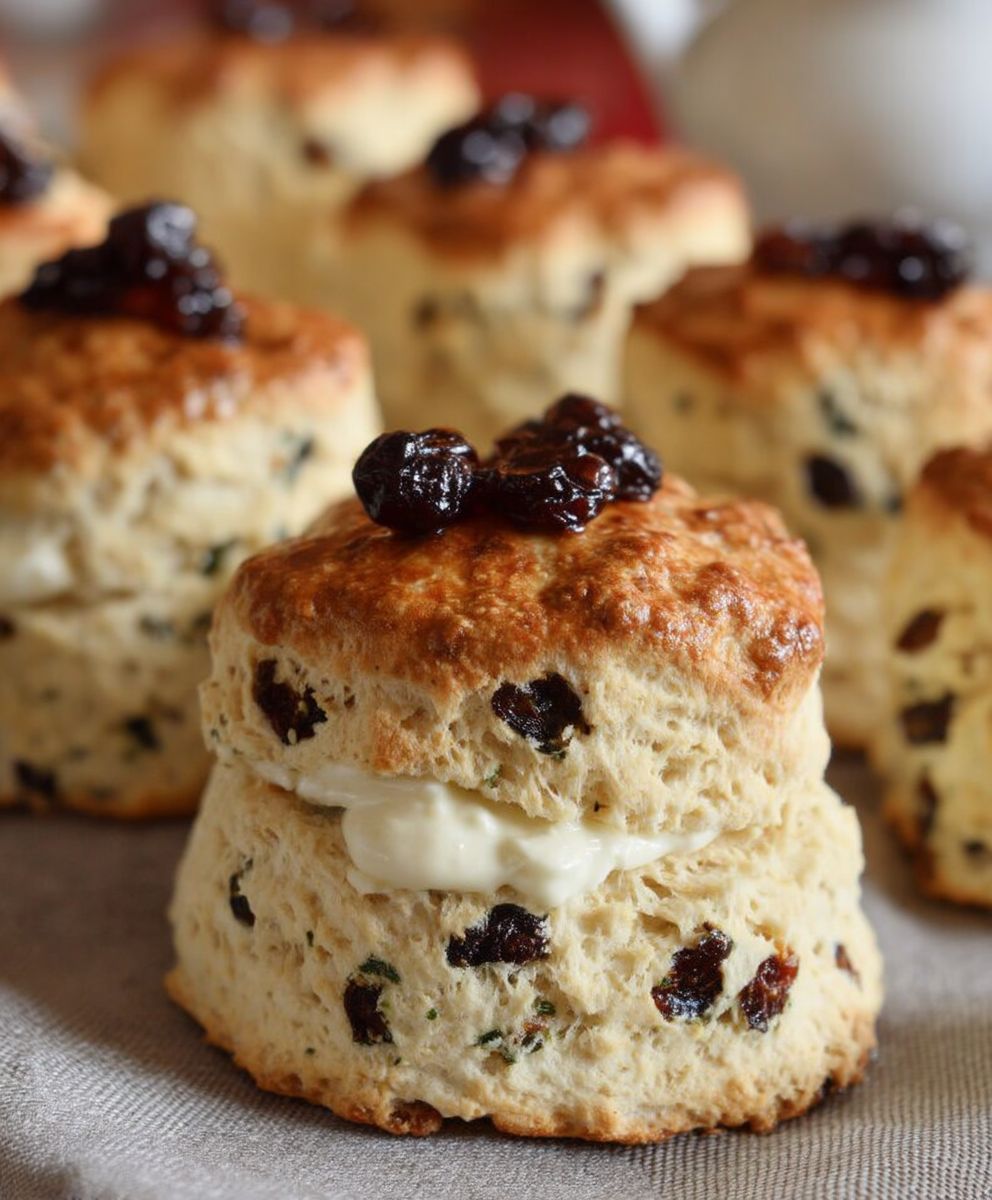Scone baking guide: Are you ready to unlock the secrets to perfectly golden, crumbly scones that will have everyone begging for more? I’m thrilled to share my ultimate guide to mastering this classic treat. Scones, with their humble origins in Scotland, have become a beloved staple in tea rooms and kitchens around the world. Their history is intertwined with afternoon tea traditions, offering a delightful accompaniment to clotted cream and jam.
What is it about scones that makes them so irresistible? Perhaps it’s the satisfyingly dense yet tender texture, or the subtle sweetness that pairs perfectly with a variety of toppings. Maybe it’s the sheer versatility from savory cheese scones to sweet fruit-filled variations, there’s a scone for every palate. Whatever the reason, these delightful baked goods have captured hearts (and stomachs!) for generations. This scone baking guide will walk you through each step, from selecting the right ingredients to achieving that coveted golden-brown crust. I’ll share my tried-and-true tips and tricks to ensure your scones are always a resounding success. Get ready to impress your friends and family with your newfound baking prowess!
Ingredients:
- 2 cups (250g) all-purpose flour, plus more for dusting
- 1/4 cup (50g) granulated sugar
- 1 tablespoon baking powder
- 1/2 teaspoon baking soda
- 1/4 teaspoon salt
- 1/2 cup (1 stick, 113g) cold unsalted butter, cut into small cubes
- 3/4 cup (180ml) cold buttermilk, plus more for brushing
- 1 large egg, lightly beaten (for egg wash, optional)
- Optional: 1/2 cup dried cranberries, blueberries, chocolate chips, or other mix-ins
Preparing the Dough: The Foundation of Flaky Scones
Okay, let’s get started! The key to amazing scones is keeping everything cold. Cold butter and buttermilk prevent the gluten from overdeveloping, resulting in a tender, flaky scone instead of a tough one. Trust me, this makes all the difference!
- Combine the Dry Ingredients: In a large bowl, whisk together the flour, sugar, baking powder, baking soda, and salt. Make sure everything is evenly distributed. This ensures a consistent rise and flavor throughout the scones.
- Cut in the Cold Butter: Add the cold, cubed butter to the flour mixture. Using a pastry blender (my preferred method!), your fingertips, or even a food processor (pulse gently!), cut the butter into the flour until the mixture resembles coarse crumbs. You should still see small pieces of butter these are what create those lovely flaky layers. If using your fingertips, work quickly to prevent the butter from melting.
- Incorporate the Buttermilk: Gradually add the cold buttermilk to the flour and butter mixture. Stir gently with a fork or spatula until just combined. Be careful not to overmix! The dough will be shaggy and slightly sticky, and that’s perfectly fine. Overmixing develops the gluten, leading to tough scones.
- Add Mix-ins (Optional): If you’re using any mix-ins like dried cranberries, blueberries, or chocolate chips, gently fold them into the dough now. Distribute them evenly without overworking the dough.
- Turn Out and Shape: Lightly flour a clean work surface. Turn the dough out onto the floured surface and gently pat it into a circle about 1 inch thick. Avoid kneading the dough!
- Cut the Scones: Use a sharp knife or a biscuit cutter (about 2-3 inches in diameter) to cut out the scones. If using a knife, cut the circle into wedges. If using a biscuit cutter, press straight down and avoid twisting, as this can seal the edges and prevent them from rising properly.
- Re-roll Scraps (Carefully!): Gently gather the scraps of dough, pat them back into a circle, and cut out more scones. Keep in mind that these scones may not be as tender as the first batch, as the dough has been worked more. Try to minimize re-rolling.
Baking to Golden Perfection: Achieving the Ideal Texture
Now for the magic! Proper baking is crucial for achieving that golden-brown exterior and light, airy interior. Don’t skip the chilling step it helps the scones hold their shape and prevents them from spreading too much in the oven.
- Preheat the Oven: Preheat your oven to 400°F (200°C). Make sure your oven is fully preheated before baking the scones. A hot oven is essential for proper rising.
- Prepare the Baking Sheet: Line a baking sheet with parchment paper. This prevents the scones from sticking and makes cleanup a breeze.
- Arrange the Scones: Place the scones on the prepared baking sheet, leaving a little space between each one. This allows for even heat circulation and prevents them from sticking together.
- Chill the Scones (Important!): Place the baking sheet with the scones in the refrigerator for at least 15 minutes, or even longer if you have time. This chilling step is crucial for preventing the scones from spreading too much in the oven and helps them rise properly.
- Egg Wash (Optional): For a golden-brown, shiny crust, brush the tops of the scones with a lightly beaten egg or buttermilk. This step is optional, but it definitely enhances the appearance of the scones.
- Bake the Scones: Bake for 15-20 minutes, or until the scones are golden brown and have risen nicely. The baking time may vary depending on your oven, so keep an eye on them. A toothpick inserted into the center of a scone should come out clean.
- Cool Slightly: Remove the scones from the oven and let them cool on the baking sheet for a few minutes before transferring them to a wire rack to cool completely.
Serving and Storage: Enjoying Your Homemade Scones
The best part! Scones are best enjoyed fresh, but they can also be stored for later. Here’s how to make the most of your delicious creations.
- Serve Warm: Scones are best served warm, ideally within a few hours of baking. They’re delicious on their own or with a dollop of clotted cream, jam, or butter.
- Storage: Store leftover scones in an airtight container at room temperature for up to 2 days. For longer storage, you can freeze them.
- Freezing: To freeze scones, let them cool completely. Then, wrap them individually in plastic wrap and place them in a freezer bag or airtight container. They can be frozen for up to 2 months.
- Reheating: To reheat frozen scones, thaw them overnight in the refrigerator or at room temperature for a few hours. Then, warm them in a preheated oven at 350°F (175°C) for 5-10 minutes, or until heated through. You can also microwave them for a shorter amount of time, but they may not be as crispy.
Tips and Tricks for Scone Success:
- Use Cold Ingredients: I can’t stress this enough! Cold butter and buttermilk are essential for tender, flaky scones.
- Don’t Overmix: Overmixing develops the gluten, resulting in tough scones. Mix the dough just until combined.
- Handle the Dough Gently: Avoid kneading the dough. Gently pat it into shape and cut out the scones.
- Chill the Scones Before Baking: This helps them hold their shape and prevents them from spreading too much in the oven.
- Experiment with Flavors: Feel free to add different mix-ins to your scones, such as dried fruit, nuts, chocolate chips, or even savory ingredients like cheese and herbs.
- Adjust Sweetness: If you prefer a less sweet scone, you can reduce the amount of sugar in the recipe.
- High Altitude Adjustments: If you live at a high altitude, you may need to adjust the recipe slightly. Try reducing the amount of baking powder by 1/4 teaspoon and adding an extra tablespoon of liquid.
Troubleshooting: Common Scone Problems and Solutions
Sometimes things don’t go exactly as planned. Here are some common scone problems and how to fix them:
- Tough Scones: This is usually caused by overmixing the dough. Be gentle and mix just until combined.
- Flat Scones: This can be caused by using warm butter or buttermilk, not chilling the scones before baking, or using old baking powder. Make sure your ingredients are cold, chill the scones, and use fresh baking powder.
- Dry Scones: This can be caused by overbaking or using too much flour. Be careful not to overbake the scones, and measure the flour accurately.
- Unevenly Baked Scones: This can be caused by an unevenly heated oven. Make sure your oven is properly calibrated, and rotate the baking sheet halfway through baking.
Variations: Scone Recipes to Explore
Once you’ve mastered the basic scone recipe, the possibilities are endless! Here are a few variations to try:
- Cranberry Orange Scones: Add 1/2 cup dried cranberries and the zest of one orange to the dough.
- Blueberry Scones: Add 1/2 cup fresh or frozen blueberries to the dough.
- Chocolate Chip Scones: Add 1/2 cup chocolate chips to the dough.
- Cheese and Herb Scones: Omit the sugar and add 1/2 cup shredded cheddar cheese and 2 tablespoons chopped fresh herbs (such as chives, thyme, or rosemary) to the dough.
- 2 cups (250g) all-purpose flour, plus more for dusting
- 1/4 cup (50g) granulated sugar
- 1 tablespoon baking powder
- 1/2 teaspoon baking soda
- 1/4 teaspoon salt
- 1/2 cup (1 stick, 113g) cold unsalted butter, cut into small cubes
- 3/4 cup (180ml) cold buttermilk, plus more for brushing
- 1 large egg, lightly beaten (for egg wash, optional)
- Optional: 1/2 cup dried cranberries, blueberries, chocolate chips, or other mix-ins
- Combine Dry Ingredients: In a large bowl, whisk together the flour, sugar, baking powder, baking soda, and salt.
- Cut in Cold Butter: Add the cold, cubed butter to the flour mixture. Using a pastry blender, fingertips, or food processor (pulse gently!), cut the butter into the flour until the mixture resembles coarse crumbs. Small pieces of butter should still be visible.
- Incorporate Buttermilk: Gradually add the cold buttermilk to the flour and butter mixture. Stir gently with a fork or spatula until just combined. Do not overmix. The dough will be shaggy and slightly sticky.
- Add Mix-ins (Optional): If using mix-ins like dried cranberries, blueberries, or chocolate chips, gently fold them into the dough.
- Turn Out and Shape: Lightly flour a clean work surface. Turn the dough out onto the floured surface and gently pat it into a circle about 1 inch thick. Avoid kneading.
- Cut the Scones: Use a sharp knife or a 2-3 inch biscuit cutter to cut out the scones. If using a knife, cut the circle into wedges. If using a biscuit cutter, press straight down and avoid twisting.
- Re-roll Scraps (Carefully!): Gently gather the scraps of dough, pat them back into a circle, and cut out more scones. Minimize re-rolling.
- Preheat Oven: Preheat your oven to 400°F (200°C).
- Prepare Baking Sheet: Line a baking sheet with parchment paper.
- Arrange Scones: Place the scones on the prepared baking sheet, leaving space between each one.
- Chill Scones (Important!): Place the baking sheet with the scones in the refrigerator for at least 15 minutes.
- Egg Wash (Optional): For a golden-brown crust, brush the tops of the scones with a lightly beaten egg or buttermilk.
- Bake Scones: Bake for 15-20 minutes, or until the scones are golden brown and have risen nicely. A toothpick inserted into the center should come out clean.
- Cool Slightly: Remove the scones from the oven and let them cool on the baking sheet for a few minutes before transferring them to a wire rack to cool completely.
- Serve Warm: Scones are best served warm, ideally within a few hours of baking. They’re delicious on their own or with a dollop of clotted cream, jam, or butter.
- Storage: Store leftover scones in an airtight container at room temperature for up to 2 days. For longer storage, you can freeze them.
- Freezing: To freeze scones, let them cool completely. Then, wrap them individually in plastic wrap and place them in a freezer bag or airtight container. They can be frozen for up to 2 months.
- Reheating: To reheat frozen scones, thaw them overnight in the refrigerator or at room temperature for a few hours. Then, warm them in a preheated oven at 350°F (175°C) for 5-10 minutes, or until heated through. You can also microwave them for a shorter amount of time, but they may not be as crispy.
- Cold Ingredients are Key: Use cold butter and buttermilk for the best texture.
- Don’t Overmix: Overmixing leads to tough scones.
- Handle Gently: Avoid kneading the dough.
- Chill Before Baking: Chilling helps the scones hold their shape.
- Experiment with Flavors: Add different mix-ins to customize your scones.
- Adjust Sweetness: Reduce the sugar if you prefer a less sweet scone.
- High Altitude Adjustments: Reduce baking powder by 1/4 teaspoon and add an extra tablespoon of liquid.

Conclusion:
So, there you have it! This isn’t just another scone recipe; it’s your passport to perfectly golden, delightfully crumbly, and utterly irresistible homemade scones. I truly believe that once you’ve tasted these, you’ll never reach for a store-bought version again. The satisfaction of creating something so delicious from scratch is simply unmatched, and the aroma that fills your kitchen while they bake is pure bliss.
But why is this recipe a must-try? It’s all about the texture. We’ve focused on techniques that guarantee a light and airy interior, contrasted by a slightly crisp exterior. No more dense, dry scones! Plus, the subtle sweetness and buttery flavor are perfectly balanced, making them incredibly versatile.
Serving Suggestions and Variations:
Now, let’s talk about how to enjoy these little beauties. The classic pairing, of course, is with clotted cream and your favorite jam. Strawberry, raspberry, or even a tangy blackcurrant preserve work wonders. But don’t stop there!
* Savory Scones: For a savory twist, try adding grated cheddar cheese, chopped chives, and a pinch of black pepper to the dough. These are fantastic with soup or as a side to a hearty salad.
* Fruit Scones: Dried cranberries, blueberries, or chopped apricots add a burst of fruity sweetness. Soak the dried fruit in warm water for about 10 minutes before adding it to the dough to keep them plump and juicy.
* Chocolate Chip Scones: Who can resist chocolate? Fold in mini chocolate chips for a decadent treat.
* Lemon Poppy Seed Scones: Add lemon zest and poppy seeds to the dough for a bright and refreshing flavor. A lemon glaze drizzled on top takes them to the next level.
* For a brunch spread: Serve alongside scrambled eggs, bacon, and fresh fruit for a truly memorable brunch.
* Afternoon Tea: These scones are the perfect addition to a traditional afternoon tea, complete with finger sandwiches and delicate pastries.
And don’t forget the beverages! A steaming cup of tea (English Breakfast, Earl Grey, or even a herbal blend) is the quintessential accompaniment. Coffee, hot chocolate, or even a glass of chilled lemonade also pair beautifully.
I’ve poured my heart into perfecting this recipe, and I’m confident that you’ll love it as much as I do. It’s more than just a recipe; it’s an experience. It’s about the joy of baking, the satisfaction of creating something delicious, and the pleasure of sharing it with loved ones.
So, what are you waiting for? Preheat your oven, gather your ingredients, and get ready to bake the best scones you’ve ever tasted. I’m so excited for you to try this recipe and experience the magic of freshly baked scones.
Once you’ve given it a go, I’d absolutely love to hear about your experience! Did you try any of the variations? What was your favorite topping? Share your photos and stories in the comments below. Let’s build a community of scone lovers! Happy baking, and I can’t wait to see your delicious creations. Remember, the key to amazing scones is a light touch and a little bit of love. Enjoy!
Scone Baking Guide: The Ultimate Recipe and Tips
Tender, flaky scones perfect for breakfast or tea. Made with cold butter and buttermilk for the best texture, easily customized with your favorite mix-ins.





Leave a Comment